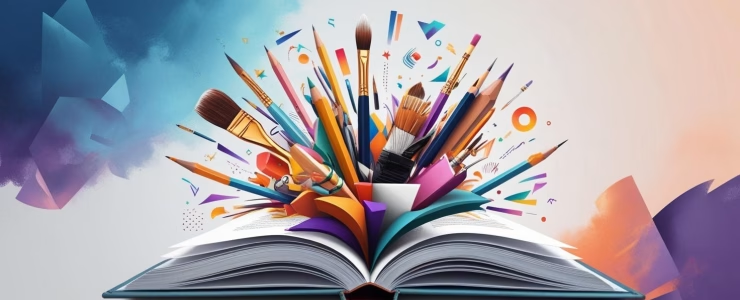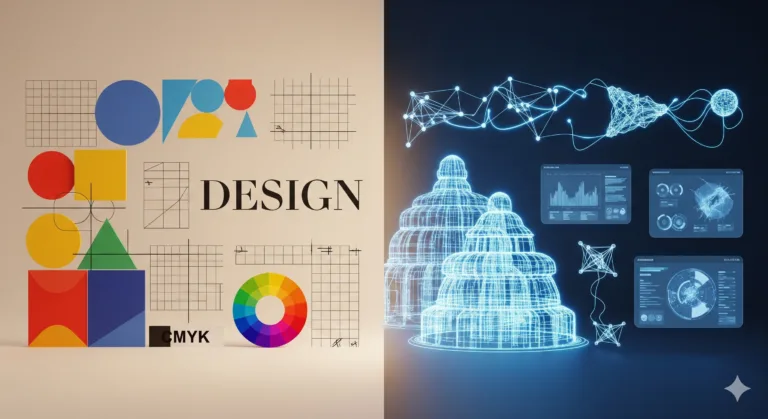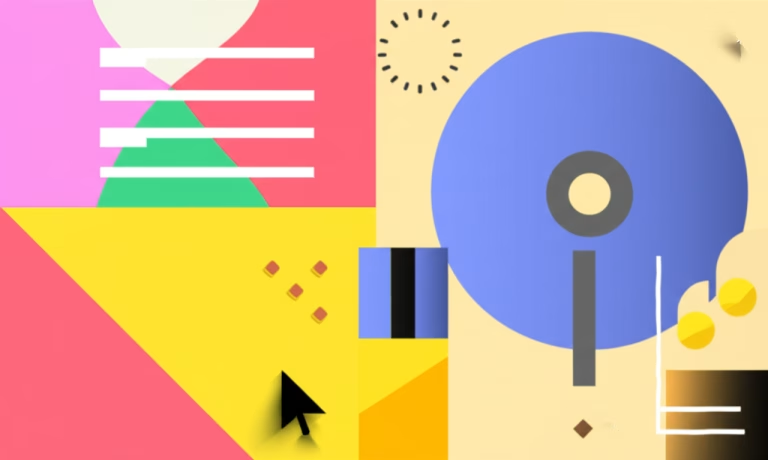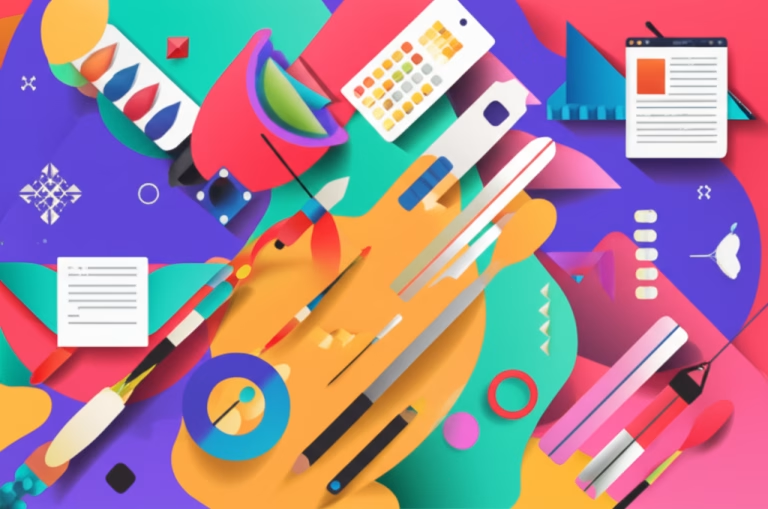Introduction
In the world of design, creativity is the main ingredient. For beginners, exploring this skill might seem challenging but is also incredibly rewarding. Design offers endless opportunities to express yourself, solve problems, and make an impact. This guide was created for those who wish to unleash their creativity without limits and embark on an exciting journey into the universe of design. Whether you’re starting as a hobbyist or envisioning a professional career, the tips here will empower you to create compelling and meaningful designs. By embracing the principles and techniques shared here, you’ll gain the confidence to transform your ideas into captivating projects that reflect your unique perspective.
Table of Contents
Fundamental Skills for Beginners
What is Design and Why is it Important
Design is the art of solving problems and communicating ideas visually. It’s all around us, from product packaging to the apps we use. Understanding its importance helps beginners recognize how design can impact the world. When you think about design, consider how a well-crafted logo or an intuitive website can change user behavior or elevate a brand’s identity. The ability to create such impactful work starts with understanding the core purpose of design—connecting ideas with people effectively and beautifully.
Key Skills to Start in Design
Some essential skills include:
- Visual composition: understanding spaces and elements, and how to arrange them harmoniously.
- Color theory: mastering the emotional and psychological impact of colors.
- Typography: selecting fonts that not only look good but also enhance the readability and mood of your project.
These skills create the foundation for any aspiring designer, allowing them to communicate effectively through their work. As you practice, you’ll learn how to blend these elements seamlessly, giving life to your creative vision.
How to Develop a Creative Eye
To expand your creativity:
- Observe designs around you, from advertisements to everyday objects. Notice patterns, contrasts, and layouts that catch your eye.
- Analyze what works (or doesn’t) in projects, breaking them down into their visual components. This exercise helps you identify strong design principles.
- Draw inspiration from various sources like photography, painting, or architecture, and find ways to integrate these elements into your work. Cross-disciplinary inspiration fuels innovative ideas.
- Start a daily sketch or mood board routine to document ideas and visualize patterns. This habit trains your mind to think creatively and stay inspired consistently.
Essential Tools to Begin
Recommended Free and Paid Software
Beginners can explore tools such as:
- Free: Canva, GIMP, Inkscape — great for initial projects with minimal investment.
- Paid:
- One-time purchase: Affinity Designer, Affinity Photo — professional-grade software without recurring fees.
- Monthly subscription: Adobe Photoshop, Illustrator, CorelDRAW — industry standards with extensive capabilities.
Experimenting with these tools helps you understand which best suits your style and goals. The right software can significantly enhance your productivity and creativity.
Online Resources for Inspiration and Learning
Websites like Behance, Dribbble, and Pinterest offer a treasure trove of ideas for your projects. Additionally, platforms like YouTube, Udemy, and Coursera provide structured lessons, ranging from basic to advanced techniques, tailored to your pace and goals. Learning continuously ensures that your skills evolve and stay relevant in the ever-changing design landscape.
Collaborative Design Platforms
Tools like Figma and Miro allow you to collaborate with others in real-time, improving ideas collectively. These platforms are especially valuable when working on group projects or brainstorming with peers. Engaging with others helps you view challenges from different perspectives and refine your concepts.
Techniques to Unleash Creativity
Practical Exercises to Stimulate Ideas
Try activities such as:
- Creating thematic mood boards that reflect different styles or concepts.
- Redesigning existing designs with your unique approach. This exercise sharpens your problem-solving skills.
- Experimenting with color palettes and font pairings to discover combinations that evoke specific emotions.
These exercises not only strengthen your skills but also spark innovative ideas, helping you develop a distinct creative voice.
Overcoming Creative Block
When faced with a creative block:
- Take a break and change your surroundings—a simple walk or a visit to a museum can work wonders. Fresh perspectives often lead to breakthroughs.
- Get inspired by other creative areas like music, literature, or nature. Inspiration can come from the most unexpected sources.
- Perform small tasks, like doodling or rearranging shapes, to warm up your creative mindset. Even minor activities can reignite your enthusiasm.
The Importance of Brainstorming in the Creative Process
Brainstorming is essential for generating ideas. Whether solo or in a group, jotting down as many ideas as possible—no matter how wild—can lead to innovative solutions. Use tools like mind maps or sticky notes to visualize your thoughts and connect them creatively. This approach helps you organize your ideas and push the boundaries of your creativity.
Simple Projects to Practice
Creating Your First Business Cards
Designing a business card is an excellent exercise in space management. Focus on:
- Choosing legible fonts.
- Maintaining a balanced layout.
- Incorporating a cohesive color scheme that represents the brand.
This project teaches you the importance of clarity and simplicity in design, setting a solid foundation for future work.
Designing Social Media Posts
Learn to balance images, text, and colors to create attractive posts. Explore trends like minimalism, bold typography, or the use of gradients to make your posts stand out. Ensure your designs are optimized for different platforms, such as Instagram squares or Pinterest verticals. Practicing with social media posts helps you understand the nuances of digital design and audience engagement.
Planning a Basic Logo
Try creating a logo that represents a fictional brand, using simple shapes and limited colors. Experiment with symmetry, negative space, and abstract symbols to build a strong visual identity. Remember, simplicity is key—a good logo should be memorable and versatile. This exercise encourages creativity while reinforcing design principles.
Conclusion
Creativity without limits is achieved through practice, exploration, and a willingness to learn. Developing essential skills, using the right tools, and exercising a creative mindset are fundamental steps for beginners in design. Remember, every expert was once a beginner. Embrace the process, celebrate small victories, and let your imagination guide your journey toward mastery in design. By committing to consistent growth and experimentation, you’ll unlock your true potential and create designs that inspire and captivate.
I strongly advise beginners to read our article “What is Graphic Design? Essential Concepts for Aspirants” to learn basic design concepts.



